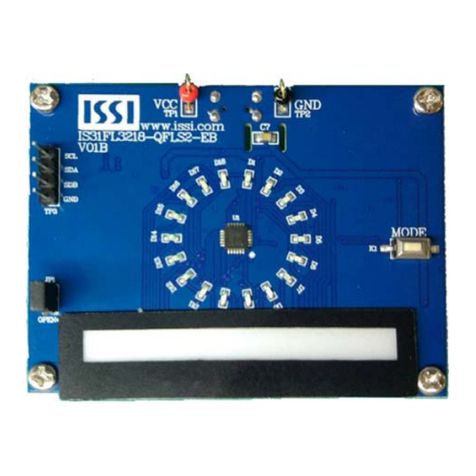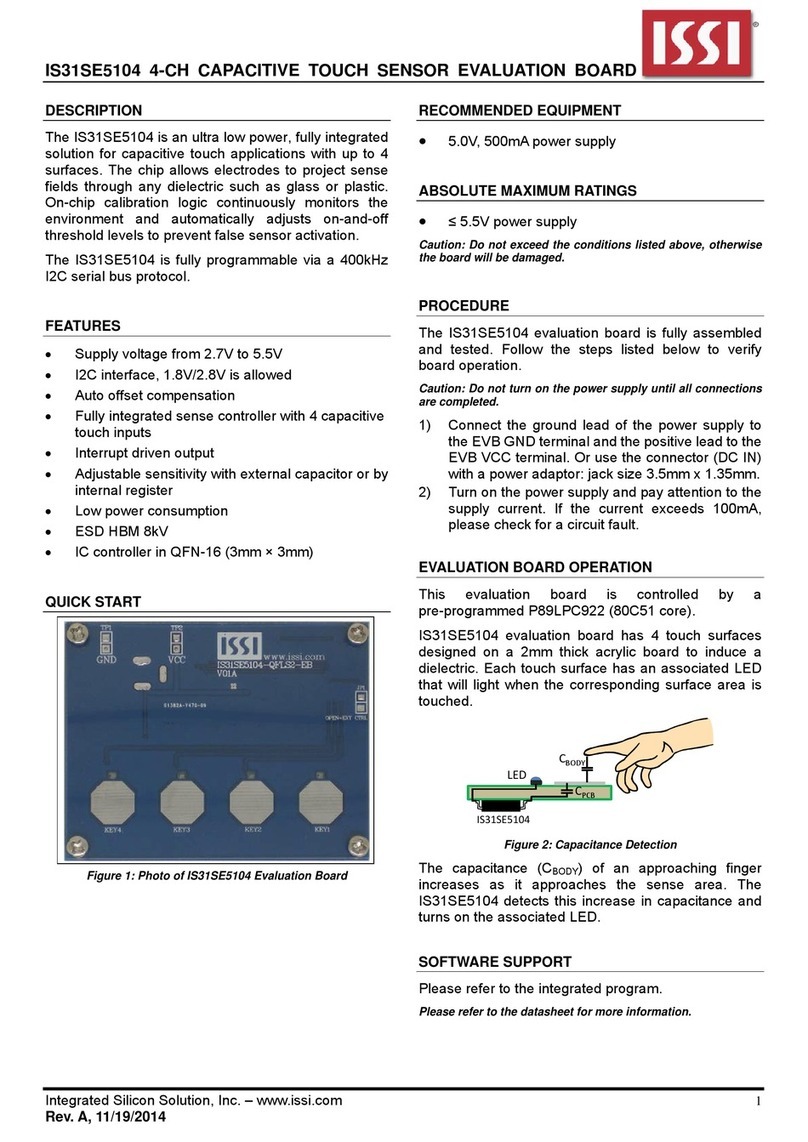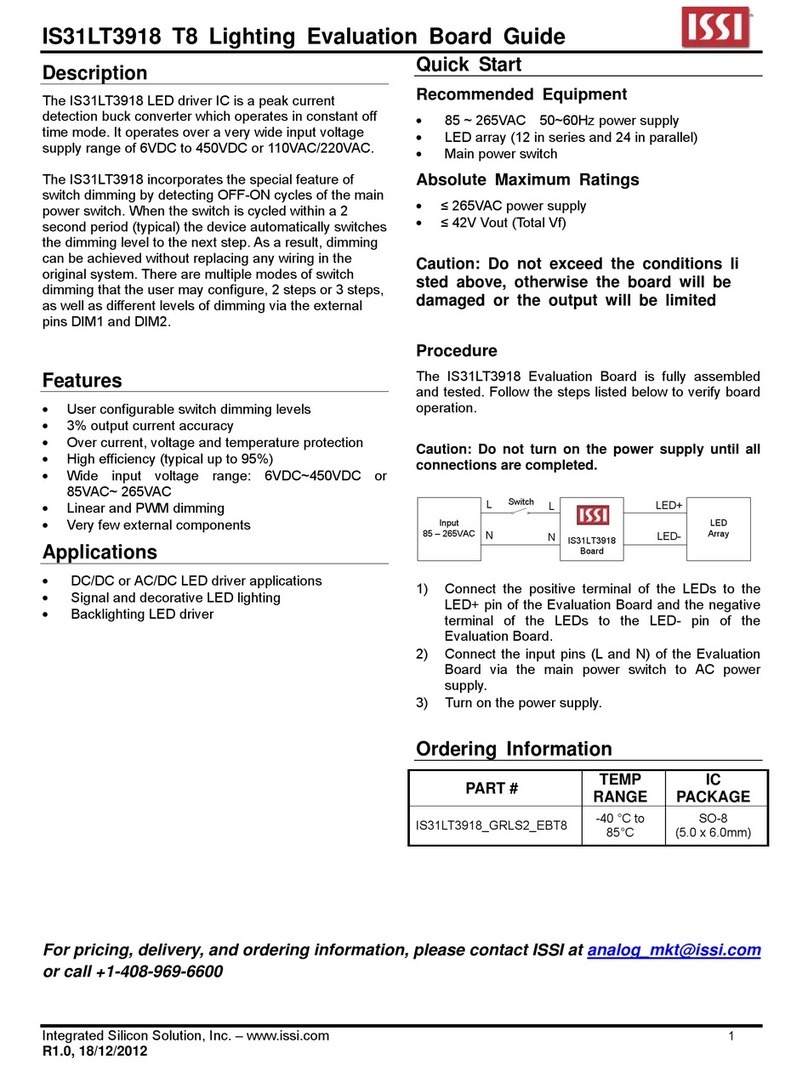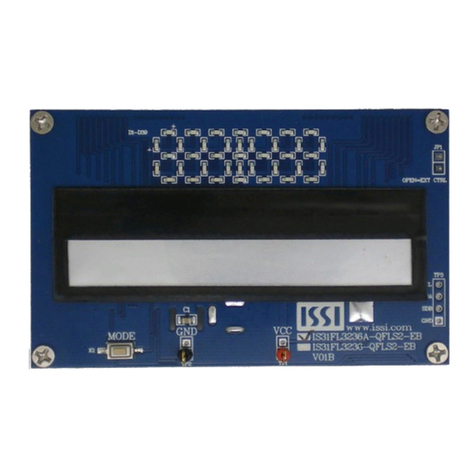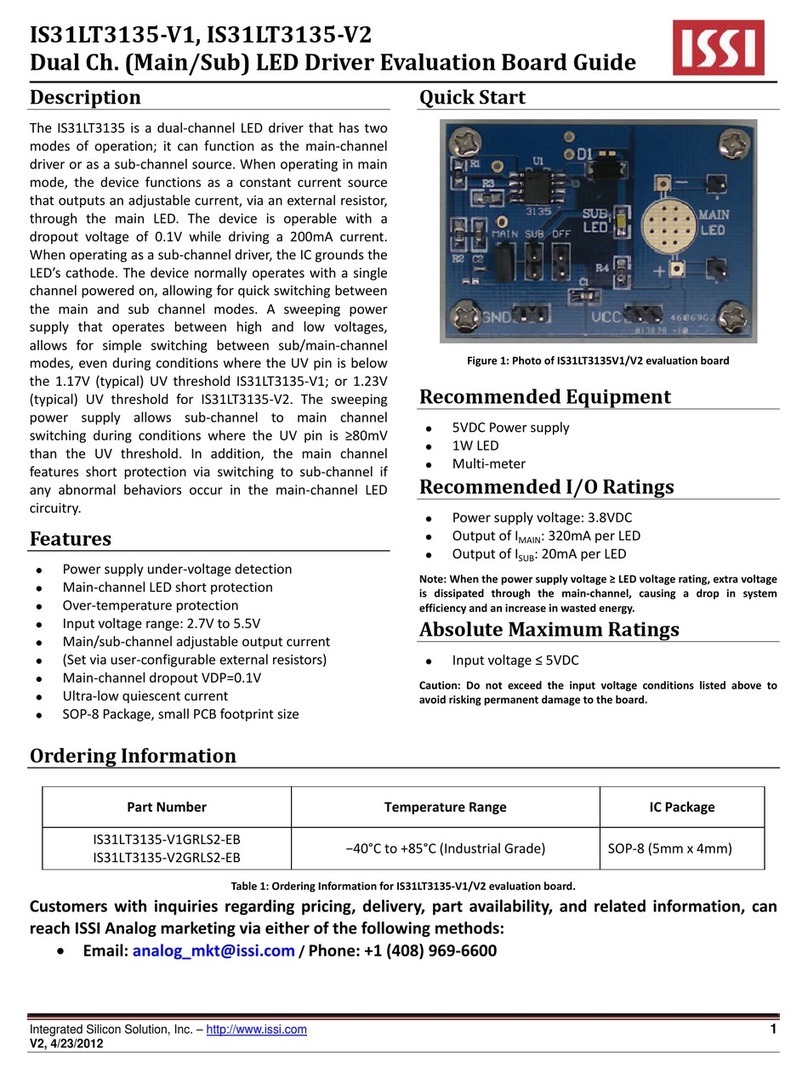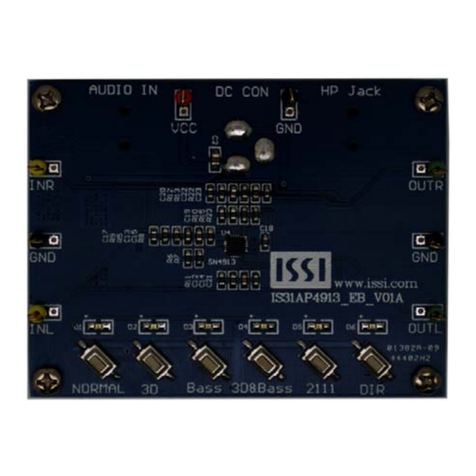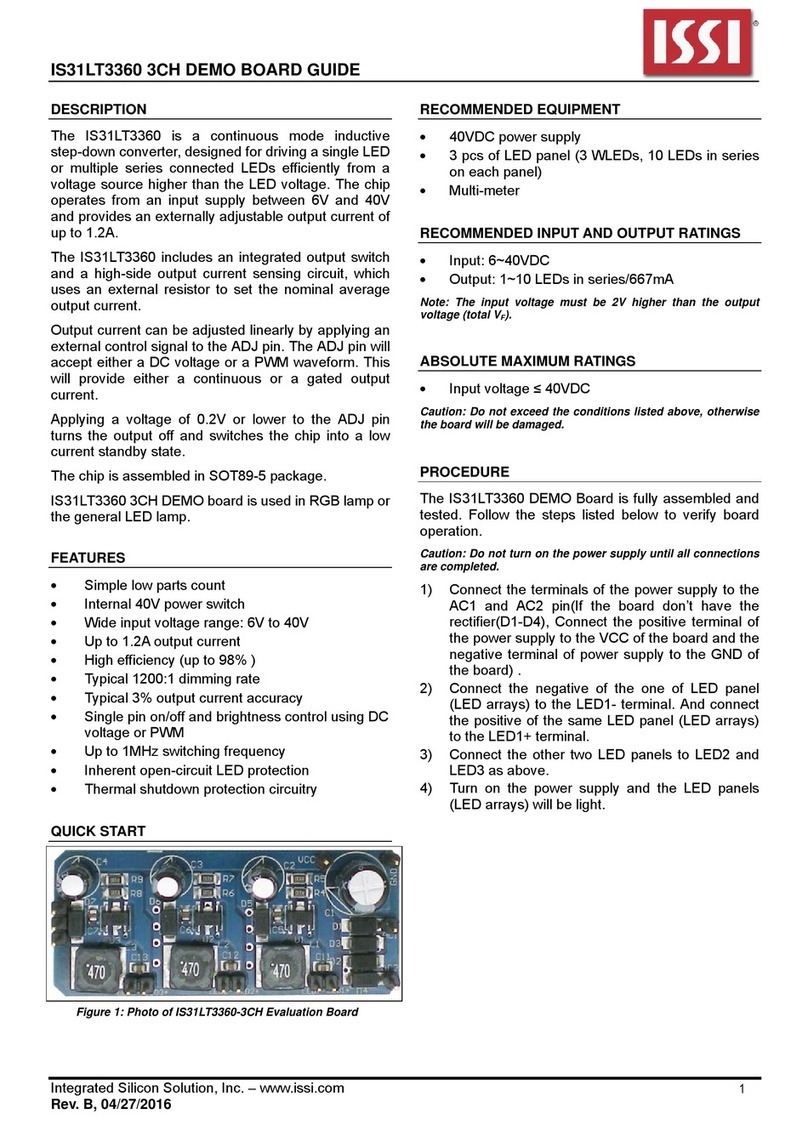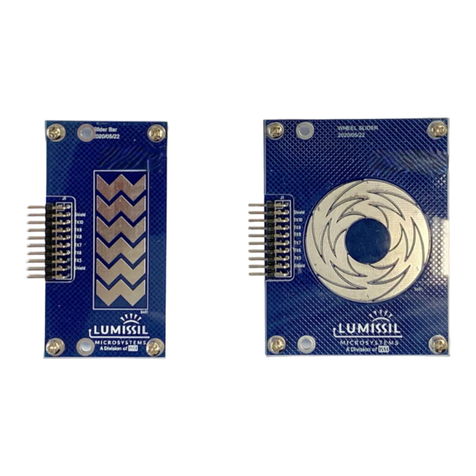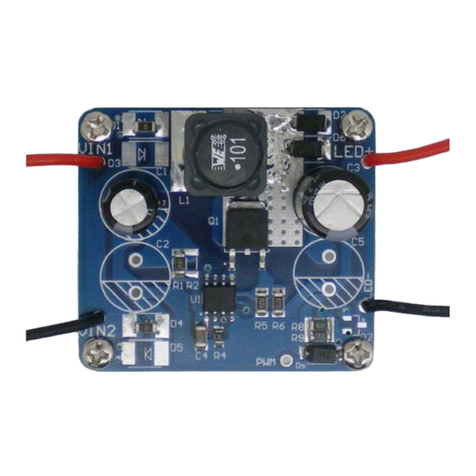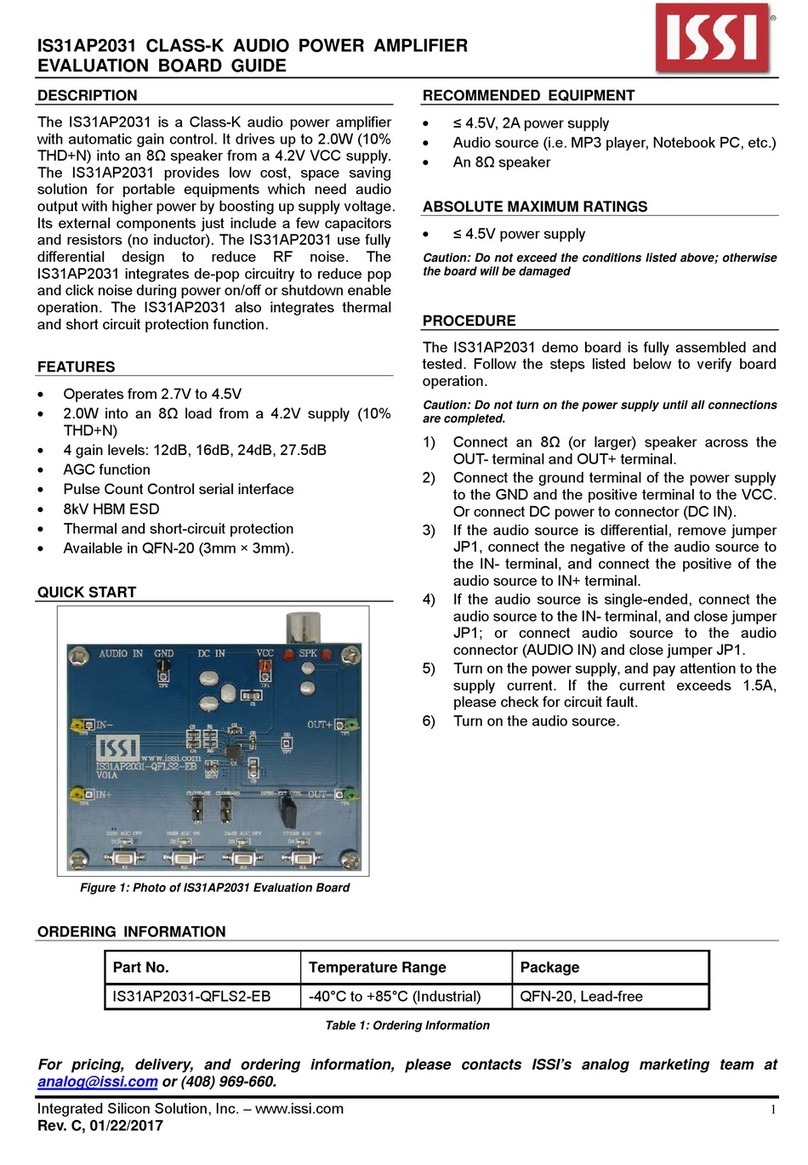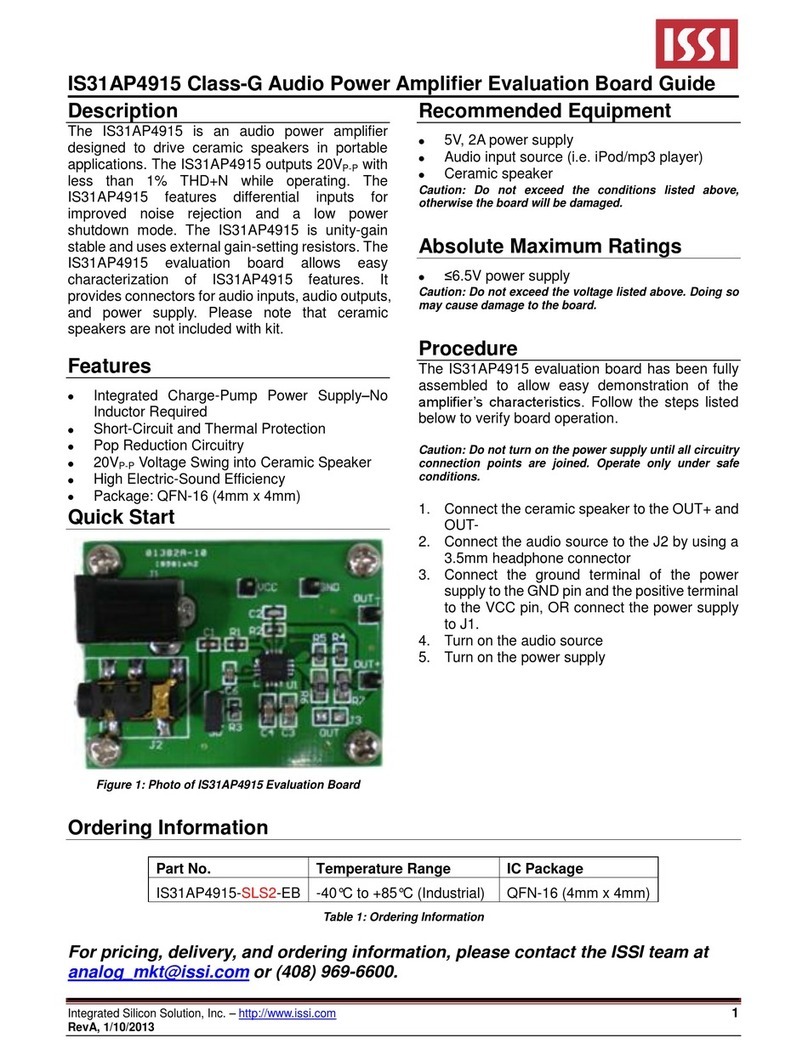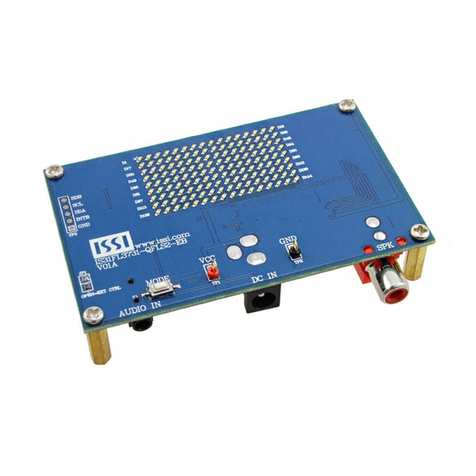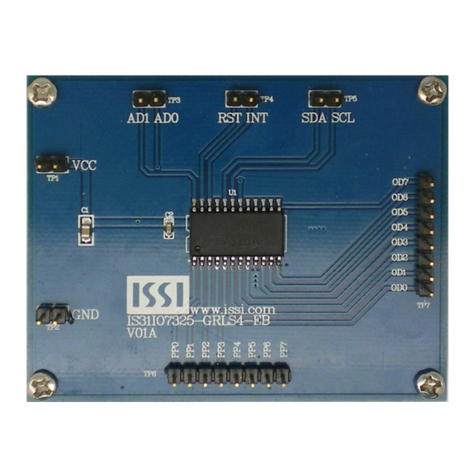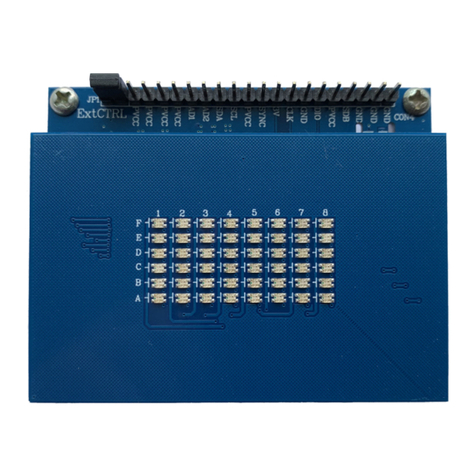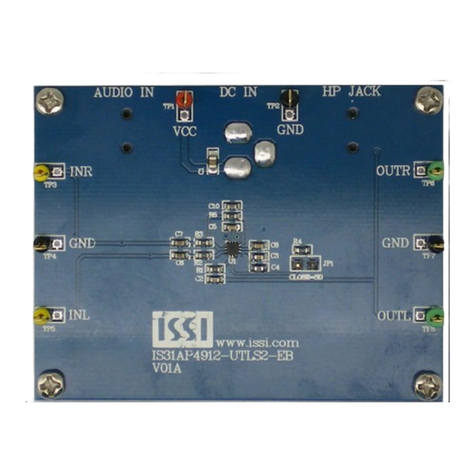
IS31LT3360 AIC LED Driver Evaluation Board Guide
Integrated Silicon Solution, Inc. – www.issi.com
R1.1, 3/22/2011
3
Detailed Description
LED Current Control
The nominal average output current in the LED(s) is
determined by the value of the external current sense
resistor (RS) connected between VIN and ISENSE and in is
given by:
.
;0.082
The table below gives values of nominal average
output current for several preferred values of current
setting resistor (Rs) in Figure 2: Application Schematic.
RS(Ω)IOUT (mA)
0.082 1200
0.1 1000
0.15 667
0.3 333
Table 3: Current Sense Resistance vs. Nominal Output Current
Vsense is divided into two ranges for enhanced output
current accuracy, and is explained in bin 3 more in
depth. The above values assume a floating ADJ pin
and a nominal voltage VREF =1.2V. Note that
RS=0.082Ωis the minimum allowed value of sense
resistor under these conditions to maintain switch
current below the specified maximum value. It is
possible to use different values of RSif the ADJ pin is
driven from an external voltage.
Inductor Selection
Recommended inductances range from 47μH to 220μH.
Higher inductances are igher supply voltages and low
output current in order to minimize errors due to
switching delays, which result in increased ripple and
lower efficiency. Higher values of inductance also result
in a smaller change in output current over the supply
voltage range. The inductor should be mounted as
close to LX pin as possible with low resistance
connections to LX and VIN pins.
PCB Layout Guide
Decoupling capacitors and coil
It is particularly important to mount the coil and the
input decoupling capacitor close to the chip to minimize
parasitic resistance and inductance, which will degrade
efficiency. The input decoupling capacitor (0.1uF fixed)
must be placed as close to the Vin and GND pins as
possible. It is also important to take account of any
trace resistance in series with current sense resistor
RS.
LX pin
The LX pin of the chip is a fast switching node, so PCB
traces should be kept as short as possible. To minimize
ground 'bounce', the ground pin of the chip should be
soldered directly to the ground plane.
ADJ pin
The ADJ pin is a high impedance input, so when left
floating, PCB traces to this pin should be as short as
possible to reduce noise pickup. ADJ pin can also be
connected to a voltage between 1.2V~5V. In this case,
the internal circuit will clamp the output current at the
value which is set by ADJ=1.2V.
High voltage traces
Avoid running any high voltage traces close to the ADJ
pin, to reduce the risk of leakage due to board
contamination. Any such leakage may raise the ADJ
pin voltage and cause excessive output current. A
ground ring placed around the ADJ pin will minimize
changes in output current under these conditions.
